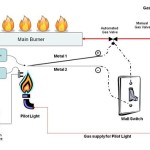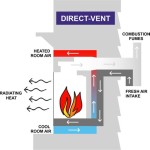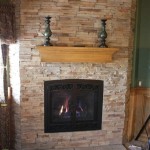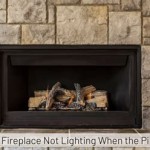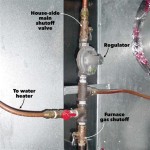Fireplace Lava Rocks: A Comprehensive Guide to Selection, Use, and Benefits
Fireplace lava rocks have emerged as a popular alternative to traditional gas logs, offering a unique aesthetic appeal and practical advantages for both indoor and outdoor fireplaces. These volcanic rocks, formed from solidified molten lava, possess a distinct porous texture and a natural, earthy color that can enhance the ambiance of any fire feature. Understanding their characteristics, proper usage, and benefits is crucial for informed decision-making when considering incorporating lava rocks into a fireplace setting.
Lava rocks are typically available in various sizes and colors, ranging from small pebbles to larger, irregularly shaped stones. The color variations are primarily due to the mineral composition and cooling process of the lava during its formation. Common colors include black, red, brown, and grey. The porous nature of lava rock allows for efficient gas distribution, creating a more consistent and natural-looking flame. Furthermore, they are remarkably heat-resistant and durable, capable of withstanding the high temperatures associated with fireplace environments without degrading or releasing harmful fumes.
Key Point 1: Understanding the Properties and Advantages of Lava Rocks
The porous structure of lava rocks is a key factor in their suitability for fireplace applications. This porosity allows the gas to disperse evenly throughout the rocks, resulting in a more uniform and aesthetically pleasing flame pattern. Unlike gas logs, which can sometimes produce localized, concentrated flames, lava rocks create a wider and more dispersed flame, mimicking the appearance of a natural wood-burning fire.
Another significant advantage of lava rocks is their exceptional heat retention capacity. Once heated, they radiate warmth for an extended period, even after the gas supply is turned off. This contributes to the overall efficiency of the fireplace, providing a more consistent and sustained heat output. The heat retention capabilities also minimize temperature fluctuations, creating a more comfortable and stable environment.
Durability is another defining characteristic of fireplace lava rocks. Formed under immense heat and pressure, these rocks are inherently resistant to cracking, crumbling, or melting, even under prolonged exposure to high temperatures. This ensures a long lifespan, reducing the need for frequent replacements. Furthermore, lava rocks are chemically inert, meaning they do not react with the gas used in the fireplace or release any harmful substances into the air. This contributes to a safer and healthier indoor environment.
Key Point 2: Selection and Preparation of Lava Rocks for Fireplaces
Selecting the appropriate type and size of lava rocks is essential for optimal fireplace performance. The size of the rocks should be proportionate to the size of the fireplace or fire pit. Smaller rocks are generally suitable for smaller fireplaces, while larger rocks are more appropriate for larger installations. Using rocks that are too small can result in uneven flame distribution, while rocks that are too large can restrict airflow and reduce efficiency.
The color of the lava rocks is primarily an aesthetic consideration, and the choice depends on the desired look and feel of the fireplace. Darker rocks, such as black or charcoal, tend to create a more modern and dramatic effect, while lighter rocks, such as red or brown, offer a more natural and rustic appearance. Mixing different colors and sizes of lava rocks can also create a visually appealing and dynamic effect.
Before placing the lava rocks in the fireplace, it is important to thoroughly clean them to remove any dust, debris, or manufacturing residues. This can be accomplished by rinsing them with water and allowing them to dry completely. This step is crucial to prevent any unwanted odors or smoke from being produced when the fireplace is in use. Properly cleaning the rocks ensures optimal performance and longevity.
Key Point 3: Safe and Effective Usage of Fireplace Lava Rocks
Proper installation of lava rocks is crucial for safe and efficient fireplace operation. The rocks should be arranged loosely and evenly throughout the firebox, ensuring adequate airflow around the burner. Avoid overcrowding the burner with too many rocks, as this can restrict air circulation and reduce the efficiency of the flame. It is also important to avoid blocking the pilot light or any other essential components of the fireplace system.
Regular maintenance is essential for prolonging the lifespan of lava rocks and maintaining optimal fireplace performance. Periodically inspect the rocks for any signs of damage or deterioration. Remove any broken or crumbling rocks and replace them with new ones. It is also advisable to occasionally clean the rocks to remove any soot or debris that may have accumulated over time. This can be done by carefully vacuuming the rocks or rinsing them with water.
Safety precautions should always be observed when using a fireplace with lava rocks. Never leave a burning fireplace unattended, and always ensure that the area around the fireplace is clear of flammable materials. Install a carbon monoxide detector in the vicinity of the fireplace to alert occupants to any potential hazards. Following these precautions ensures the safe and enjoyable use of a fireplace with lava rocks.
In addition to fireplaces, lava rocks can also be used effectively in outdoor fire pits. They offer the same benefits of heat retention, durability, and aesthetic appeal as they do in indoor fireplaces. When using lava rocks in outdoor fire pits, it is important to ensure that the fire pit is located in a safe and well-ventilated area. Follow all local regulations and guidelines regarding outdoor fire pits to ensure safe operation.
The versatility, durability, and aesthetic appeal of fireplace lava rocks make them a compelling choice for homeowners seeking to enhance their fireplace experience. Understanding their properties, proper usage, and maintenance requirements is key to maximizing their benefits and ensuring safe and efficient fireplace operation. Choosing the right size, color, and arrangement of lava rocks can transform a fireplace into a captivating focal point, adding warmth and ambiance to any space.

Lava Rock 10 Things To Know About Fire Pit Rocks Buyer S Guide 2024

Lava Rock Vs Fire Glass Blog Fireplace And Chimney Authority

Lava Rock 10 Things To Know About Fire Pit Rocks Buyer S Guide 2024

Lava Rock Vs Fire Glass Blog Fireplace And Chimney Authority

Manchester Oak Gas Logs Cyprus Air Fireplaces Va Md Dc

Fire Pit Media Lava Rock Glass Woodlanddirect Com

Lava Rock Or Fire Glass Which Is Better

Fire Pit Lava Rocks Best Way To Paint Furniture Check More At Http Testmonsterblog Com Glass Fireplace

Modern Fire Pits Toppings Part 2 The Options Firepits

Red Lava Rock 3 4 Volcanic For Fire Pits Amp Fireplaces 10 Pounds Com
Related Posts

